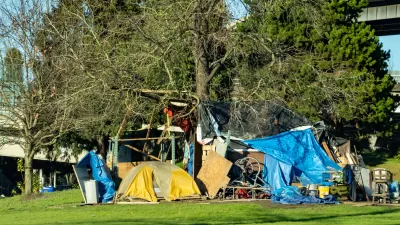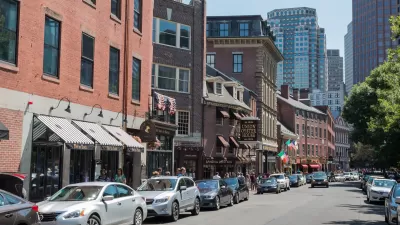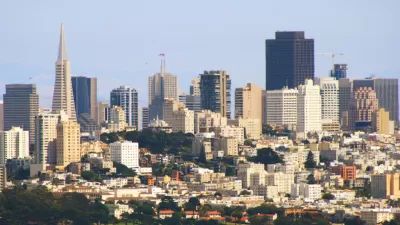A policy requiring new commercial developments to include public spaces has created more than a dozen new public places in downtown San Francisco since the 1980s. Some say more effort is needed to make these public places known by the public.
"The Intercontinental terraces show the mixed results of a decades-old city policy that requires new commercial buildings in central San Francisco to provide publicly accessible open space. More than a dozen such spaces now exist, including lush street-side plazas and rooftop aeries with spellbinding views. Yet many are hard to find unless you're in the know. Others are more Scrooge-like than welcoming."
"The effort, which began in the 1980s, has added a network of pocket-size retreats to the Financial District's towers and traffic. Now that they're in place, though, the challenge is to weave them more fully into downtown life."
"Corporate plazas have been part of the downtown landscape since 1959, when the Crown Zellerbach Building at Bush and Market streets opened with a sunken plaza that opened up views. Time magazine praised it as spectacular. Soon after, the planning code was loosened to allow developers to build larger towers if they cleared away space on the ground."
"The result was corporate plateaus that often were no more than widened sidewalks. So in 1985, officials changed such spaces from a perk to a requirement. Builders had to provide 1 square foot of public space per 50 square feet of commercial space. Additional formulas spelled out the required seating and made it obligatory to have an informational plaque at street level stating the public hours. Buildings also had to 'provide toilet spaces open to the public.'"
"As a result of the 1985 plan, 13 spaces have been created; in some cases, developers were allowed to financially contribute to renovations of other parks and plazas."
FULL STORY: Little-known open spaces enhance downtown S.F.

Planetizen Federal Action Tracker
A weekly monitor of how Trump’s orders and actions are impacting planners and planning in America.

San Francisco's School District Spent $105M To Build Affordable Housing for Teachers — And That's Just the Beginning
SFUSD joins a growing list of school districts using their land holdings to address housing affordability challenges faced by their own employees.

The Tiny, Adorable $7,000 Car Turning Japan Onto EVs
The single seat Mibot charges from a regular plug as quickly as an iPad, and is about half the price of an average EV.

Trump Approves Futuristic Automated Texas-Mexico Cargo Corridor
The project could remove tens of thousands of commercial trucks from roadways.

Austin's First Single Stair Apartment Building is Officially Underway
Eliminating the requirement for two staircases in multi-story residential buildings lets developers use smaller lots and more flexible designs to create denser housing.

Atlanta Bus System Redesign Will Nearly Triple Access
MARTA's Next Gen Bus Network will retool over 100 bus routes, expand frequent service.
Urban Design for Planners 1: Software Tools
This six-course series explores essential urban design concepts using open source software and equips planners with the tools they need to participate fully in the urban design process.
Planning for Universal Design
Learn the tools for implementing Universal Design in planning regulations.
Smith Gee Studio
City of Charlotte
City of Camden Redevelopment Agency
City of Astoria
Transportation Research & Education Center (TREC) at Portland State University
City of Camden Redevelopment Agency
Municipality of Princeton (NJ)





























